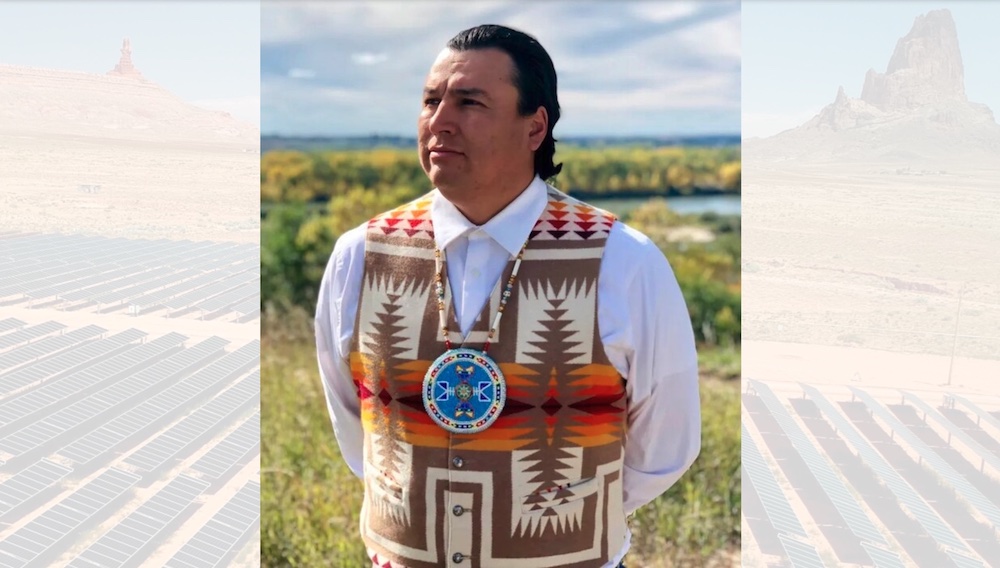
- Details
- By Cody Two Bears, Indigenized Energy
- Opinion | Op-Ed
Guest Opinion. When I first tried to pursue solar energy development after the Standing Rock protests against the Dakota Access Pipeline, I learned a lot.
First and foremost, we had real challenges to overcome. The solar industry is driven by policy and financing much more than the sun. We had the sun, but we did not have favorable policies.
Ten years later, much has changed. We've learned what is possible. We've seen that solar energy deployment in communities like ours creates both short-term impacts and long-term benefits. When the world showed up to help us build our first solar farm at Standing Rock, it wasn't because we needed a handout. It was because they knew it was an investment in our future—an investment that creates jobs, saves money in homes, and keeps money circulating in communities instead of being extracted by the fossil fuel industry.
The Solar for All program recognizes this potential by supporting solar project development and more importantly, solar lending. This program is not just a subsidy - it is a down payment that will allow rural and tribal communities to pursue energy independence and reclaim our nations' energy sovereignty.
Why Solar in Indian Country Just Makes Sense
The data backs us up. Some of the best places to invest in solar energy are rural, remote areas—many of which are tribal lands. We have open land, high solar potential, and a strong community will. More importantly, solar pays for itself. The return on investment is clear. Solar is not just the lowest cost form of new energy, but also an investment that pays for itself. Data from our recent projects show an average 45% reduction in energy costs. The average payback period for our solar projects is estimated to be 7-10 years, resulting in significant cost savings and revenue generation over their 25+ year lifespan. As electricity costs rise, the faster solar energy pays for itself.
Other benefits are more immediate. The jobs created by the solar industry have huge impacts in Native communities where unemployment levels on some reservations exceed 50%. The U.S. solar industry supported nearly 280,000 jobs by the end of 2023—adding over 15,000 in just one year, according to the 14th annual National Solar Jobs Census published by the Interstate Renewable Energy Council (IREC). We are working with the best training programs and some of the biggest employers to create entry-level opportunities that can lead to sustained employment and careers in clean energy.
When tribal communities generate their own power, they create revenue. They build self-sufficiency. They reinvest in housing, health, and education. And when tribes lead that work—as we are doing now—it becomes a model not only for Native nations but for rural communities across the United States.
A Proven Approach: Seed the Ground, Then Grow
Across Indian Country, tribes aren't waiting. When a coalition of 14 tribal nations received a Solar for All grant, the work began immediately. The stakes are clear. The strategy is straightforward: Develop solar strategies that generate long-term value.
Local tribal workers need training so the economic benefits stay in our communities. This approach helps tribes build an infrastructure that can grow—not one-time projects, but sustainable programs that will eventually run on their own. Programs that will generate revenue for decades to come. That's not charity—that's enterprise. That's economic development.
What Happens When the Investment Is Pulled Back?
Right now, the $20 billion in solar loan funds that were supposed to accompany our work are frozen. These funds were to go through green banks and CDFIs (Community Development Financial Institutions) to make solar accessible in communities where traditional banks have always said no. If those loan dollars disappear, our ability to meet our work plans is put at risk. That's not just a bureaucratic problem—it's a broken promise. And once again, it would leave Native communities behind in a system that's supposed to be about reclaiming our nations' economic health and energy independence.
The Truth: We're Doing This—But Together, We Can Do More
Here's what I want people to understand: Tribes are not asking for permission. We are not waiting. We are already building solar farms, setting up energy training centers, and writing our own playbook.
Programs like Solar for All enable tribes to move faster, build stronger, and create deeper impacts in their communities. Investing in tribal energy isn’t just supporting clean power—it’s backing a movement of economic and cultural resurgence.
We Know What Works. We Just Need You to See It.
We've seen what happens when tribes are left out of energy development. We've seen the cost—not just in dollars, but in lives, health, and opportunity. Nearly 1 in 5 homes in tribal communities lack electricity. In many places, tribal people are paying up to 12 times the national average for energy.
This time, let's get it right. Let's invest in the communities who are already doing the work. Let's understand that energy sovereignty isn't a political issue—it's a survival issue. It's an economic issue. It's a moral one.
And let's recognize the truth that Native people have always known: We are the solution. We have the energy. Now is the time to unite around it. Let's make this investment together.
Cody Two Bears, a member of the Standing Rock Sioux Tribe, is the founder and executive director of Indigenized Energy, a capacity-building organization that works directly with Native Tribes to pursue energy transformation with a focus on economic development.